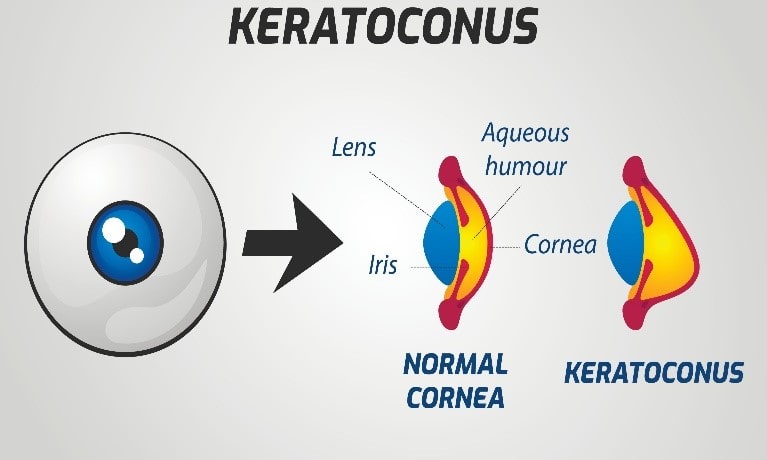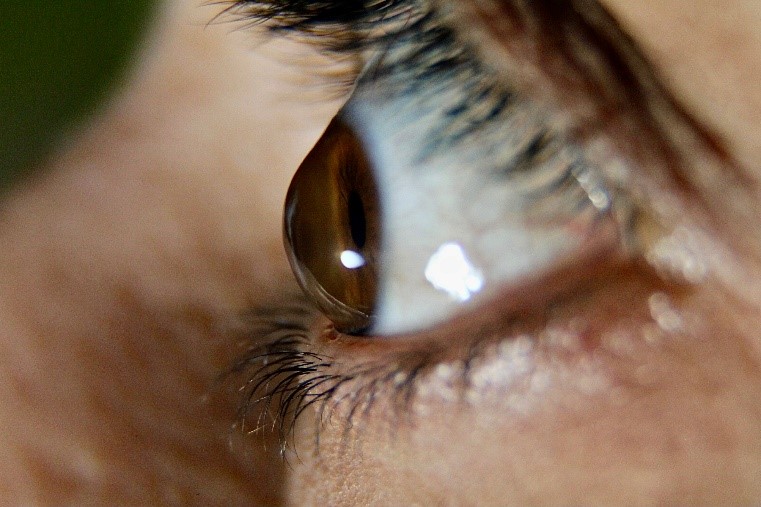 With over two decades of experience at the Boxer Wachler Vision Institute in Beverly Hills, I have committed my career to not only treating patients with keratoconus, but also developing new, highly effective methods for stopping and counteracting this serious eye condition. Treatments I offer to keratoconus patients include:
With over two decades of experience at the Boxer Wachler Vision Institute in Beverly Hills, I have committed my career to not only treating patients with keratoconus, but also developing new, highly effective methods for stopping and counteracting this serious eye condition. Treatments I offer to keratoconus patients include:
1.Holcomb C3-R® Cross-Linking
This non-invasive treatment is arguably the most effective treatment for halting the progression of keratoconus. By applying drops of riboflavin and shining a UVA light on the eyes, I can stop the gradual bulging of the cornea in 99.3% of patients and do it without pain. Patients prefer my proprietary Holcomb C3-R system to cross-linking performed by other ophthalmologists because my version does not require the removal of the epithelium and locks in the results for maximum effect. This system was named after my patient Steven Holcomb, who after being treated for keratoconus went on to win one gold medal and two silver medals in bobsledding at the Olympic games.
2.Intacs®
Keratoconus is characterized by a gradually bulging and cone-shaped cornea. The more the cornea bulges, the more it distorts vision, so it is important to have early treatment that prevents the cornea from becoming more conical. Intacs are miniature half-circle inserts placed on the periphery of the cornea to help flatten the shape of the cornea. Patients who have Intacs usually notice crisper vision with less double vision and visual distortion. In most cases, I recommend combining intacs surgery with other treatments to tackle keratoconus and better preserve the patient’s vision over the long term.
3.CK for Keratoconus
 Patients with keratoconus inevitably develop astigmatism due to their unusually shaped cornea(s). To help patients overcome their refractive errors, I perform conductive keratoplasty (CK), which uses radiofrequency heat to shrink a specific area of cornea’s curvature. After treatment, patients typically notice that their vision is better than it was using prescription lenses exclusively. I often combine CK with Intacs (corneal inserts) to maximize the benefits of both procedures. Because of my long experience, I can customize the procedure for the optimal vision correction.
Patients with keratoconus inevitably develop astigmatism due to their unusually shaped cornea(s). To help patients overcome their refractive errors, I perform conductive keratoplasty (CK), which uses radiofrequency heat to shrink a specific area of cornea’s curvature. After treatment, patients typically notice that their vision is better than it was using prescription lenses exclusively. I often combine CK with Intacs (corneal inserts) to maximize the benefits of both procedures. Because of my long experience, I can customize the procedure for the optimal vision correction.
4.Visian ICL
After undergoing other treatments, keratoconus patients often develop significant (if not extreme) myopia. To help my patients overcome their severe nearsightedness, I offer Visian implantable collamer lenses (ICLs) These transparent, malleable lenses are ideal for transmitting light while reducing any glare that can negatively impact vision from glasses. Many patients find that their sight is better after having Visian ICLs placed than it was with traditional prescription lenses. Best of all, keratoconus patients who have Intacs are still good candidates for the procedure.
Get 3 Latest Best-Selling Keratoconus Books For Free!
(Plus a Complimentary Consultation – Value $307.00)
These books normally range from $15.99 to $22.95 each plus shipping



Watch Dr. Brian’s webinar, How to Conquer Keratoconus
FAQs
Does keratoconus cause blindness?
Keratoconus does not typically result in blindness, but it can cause legal blindness, which is 20/200 vision or worse. Those with the disease may begin to experience a progressive decline in vision, even when wearing glasses or contact lenses. The disease’s progressive nature makes it difficult to participate in regular activities, making treatment necessary.
What are the risk factors for keratoconus?
There are a number of factors that increase your risk of developing keratoconus, including:
- Family history: Individuals of close relatives with keratoconus may be at increased risk of developing the condition.
- Allergies and eye rubbing: Many individuals with keratoconus also experience eye-irritating allergies, which lead to eye rubbing to relieve itching. For corneas that are already weak, vigorous rubbing of the eyes can cause trauma and contribute to the development of the condition. Likewise, if you already have keratoconus, rubbing your eyes could make your symptoms worse.
- Environmental factors: Those living in dry, dusty climates may experience keratoconus at a higher rate. This is likely due to the environment leading to more eye irritation.
- Certain conditions: Certain conditions like sleep apnea, retinitis pigmentosa, Downs syndrome, Marfan syndrome, hay fever, and asthma may be risk factors for keratoconus.
When is keratoconus diagnosed?
Keratoconus may be diagnosed at your regular eye exam. Your cornea will be examined, and its curvature may be measured. Additionally, Dr. Brian may use specialized imaging (topography) to create a map of your cornea that indicates its height, shape, and thickness.
What is the difference between keratoconus and astigmatism?
Keratoconus is an eye disease that results in a protrusion of the cornea into a cone-like shape. A keratoconic cornea is irregular and stretched, which causes light to not focus properly, leading to blurry vision. Astigmatism is a type of refractive error caused by an imperfection in the curvature of the cornea and can also lead to blurry vision.
What are the symptoms of keratoconus?
Keratoconus is often first spotted when a person is in their late teens to early 20s (but certainly can occur in most any decade of life), with symptoms worsening over a timeframe of about 10 to 20 years. The condition typically starts in one eye then impacts both eyes that can lead to vision differences between the two. As such, symptoms can differ in each eye. Early-stage keratoconus symptoms include the following:
- Mildly blurry vision
- Vision that is slightly distorted (straight lines may appear wavy)
- Sensitivity to light
- Redness of the eyes
- Eye swelling
As it progresses, keratoconus may produce the following symptoms:
- Increased blurry and distorted vision
- Glare and halos around lights at night
- Loss of confidence to drive at night
- Increased nearsightedness or astigmatism
- Inability to wear contact lenses
Do contact lenses treat keratoconus?
Keratoconus can result in blurry vision. While contact lenses can improve vision, they do not control the underlying disease. For effective keratoconus treatment, schedule a consultation with Dr. Brian to learn more about the keratoconus solutions he has successfully developed such at Holcomb C3-R, Intacs, and CK. After keratoconus is treated, often Visian ICL lens implants can dramatically improve vision without glasses or contact lenses.
How can I protect my eyes after they have been treated for keratoconus?
You should protect your eyes both before and after your keratoconus treatment. Consider wearing protective eyewear as appropriate to keep away dust and debris. Additionally, if you know you will be exposed to the sun, wearing sunglasses that shield against UV rays can help protect your eyes against UV damage. Look for sunglasses with a wraparound frame design for extra protection from the sun.
Make an Appointment
After examining your eyes and seeing the extent of your keratoconus, I can suggest a thorough treatment plan that should stop your cornea from bulging and protect your eyesight from getting much worse. Today’s keratoconus patients can live normal, unobstructed lives, but early treatment plays a pivotal role in achieving this outcome. To learn more from one of the country’s top vision experts, please call 424-274-0958, text 424-245-0171 or email info@boxerwachler.com today.


